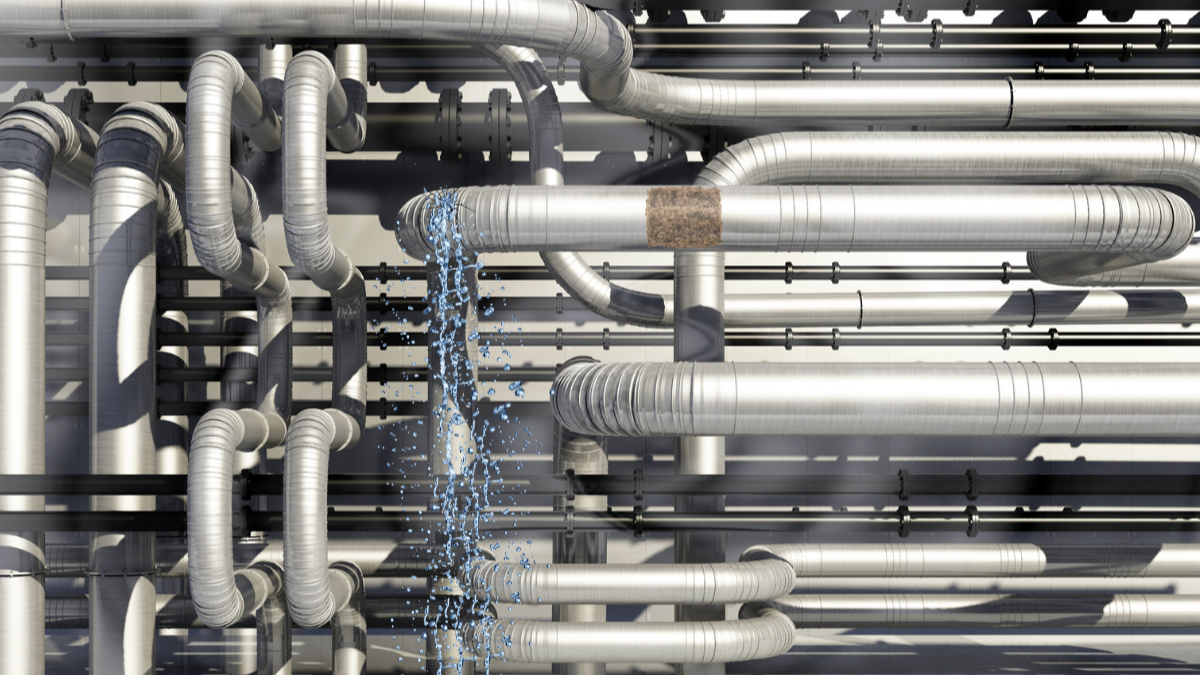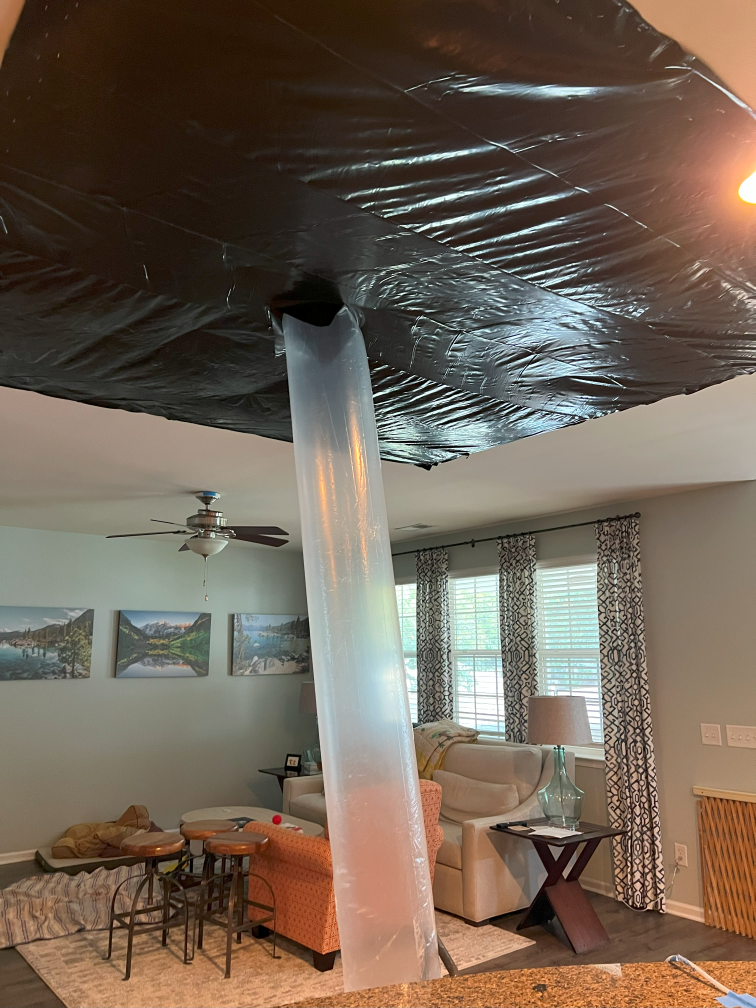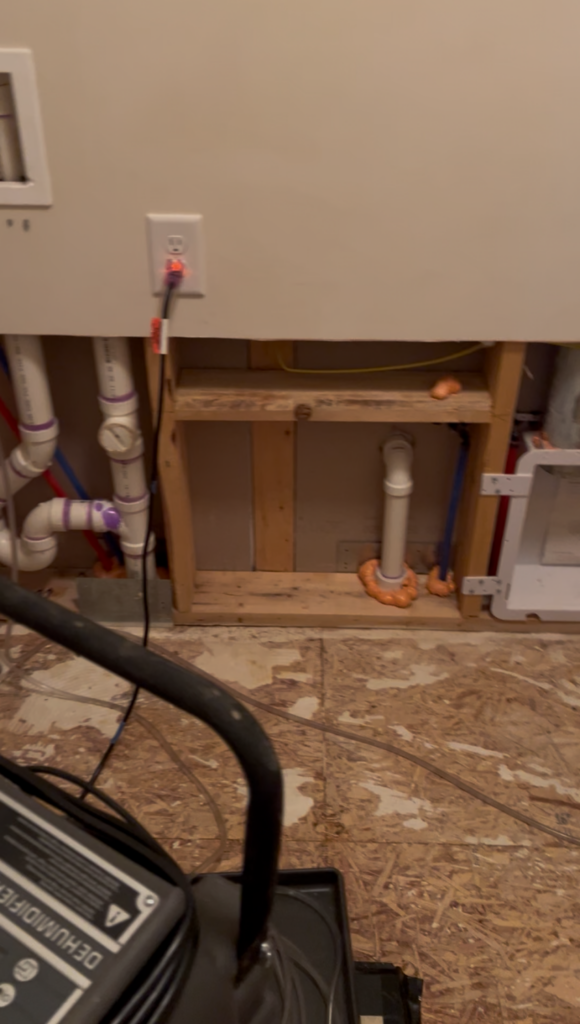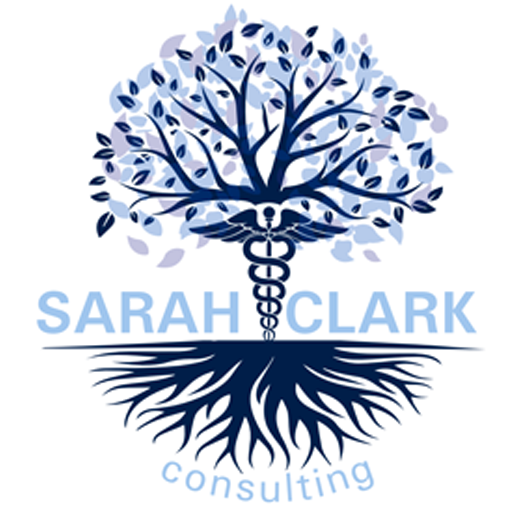
A few weeks ago, water damage struck my home thanks to a clogged condensate line. At first, I didn’t notice anything was wrong. The HVAC was running. The washing machine drained. Life was normal, until one day, 30-plus gallons of water had nowhere to go and backed up into my ceiling.
The plumber diagnosed the issue (not my fault, just how the house was built), but by then it was too late. The water damage/mold remediation company came out, tore out the ceiling, floors, and parts of the walls in the affected 4 rooms, and set up dryers and dehumidifiers that roared like jet engines for days.
One machine in particular looked just like one of those wacky air dancers you see outside car dealerships, which at least gave me something to laugh about while yelling over the noise. But not my dog, Blaze, he was petrified!

(my own personal air dancer)
Now the space is dry, but I’m still waiting for the repairs to start, with no clear timeline. And every day I walk by the exposed floor joists and drywall, I’m reminded of one thing: catching a problem early is always cheaper and easier than fixing it after the fact. I also have a clear path to prevent it from happening in the future, a monthly enzyme cleaner to keep the sludge at bay. I wish I knew about this cleaner ahead of time, but as we all know, hindsight is 20/20!
Your practice has drains too, workflows, processes, systems, and some of them might be slowly backing up without you realizing it.
Each of these is like a drip, not a disaster. But if they go unchecked, you eventually face a flood: angry patients, lost revenue, burned-out staff, schedule chaos.
The good news is, you don’t need to tear down your practice and rebuild from scratch. You just need to catch the sludge early and keep things flowing.
Here’s how you start:
This is process improvement at its most approachable: no massive overhaul, just consistent maintenance to avoid the crisis.
Just like my home repairs will cost far more than an $80 bottle of enzyme cleaner would have, letting inefficiencies build in your practice has a real cost:
The earlier you find the clog, the cheaper and less disruptive it is to fix.
Right now, my house is still in its messy middle. There are open walls, missing floors, and a to-be-determined timeline for repairs. It’s inconvenient, stressful, and noisy, but necessary.
Process improvement can feel the same way: sometimes you have to rip out what isn’t working before you can rebuild something better. It’s messy, and you may not know how long it will take, but staying with the process matters.

(laundry room with flooring and wall removed, and dehumidifier running 24/7-caused by a leak)
Identify one “slow leak” in your practice this month.
Then repeat next month. Small, steady improvements keep you from needing the practice equivalent of mold remediation.
You provide excellent care. Your systems should reflect that same level of excellence, not leave you scrambling to fix a crisis after it’s overflowed.
Catch the clogs early. Clear the line regularly. Keep your practice running smoothly so you can focus on what you do best: caring for patients, not cleaning up a mess.
Did you know Sarah Clark Consulting offers a FREE practice self-assessment? CLICK HERE to take the one minute assessment and get some great information to keep the smile on your face while making your practice more efficient!
